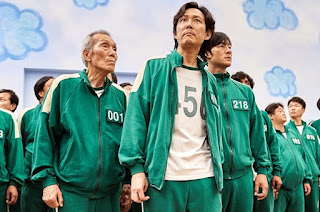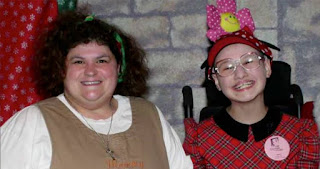Saved Again: Netflix Acquires Rights To The 2019 Season Of The Bold And The Beautiful For Fans Across South Africa
Could Netflix Become The Exclusive/Future Home Of Nickelodeon?
When WWE Will Start Streaming Exclusively On Netflix And Exit SuperSport, DStv And GOtv Across Africa?
Netflix To Spend 2.6 Billion In Korean Entertainment
Netflix Inc said on Tuesday it plans to invest $2.5 billion in South Korea over the next four years to produce Korean TV series, movies and unscripted shows, doubling the amount the company has invested in the market since 2016.
"We were able to make this decision because we have great confidence that the Korean creative industry will continue to tell great stories," said Netflix co-CEO Ted Sarandos
The US streaming service announced this after a meeting between South Korean President Yoon Suk Yeol and Netflix co-CEO Ted Sarandos. Yoon arrived in Washington on Monday for a six-day state visit.
President Yoon welcomed the investment as a "major opportunity" for South Korea's content industry and Netflix as the country seeks to increase cultural exports and soft power.
Shares of South Korean production and entertainment companies rallied on Tuesday, with Showbox and Studio Dragon up 8.75% and 2.26%, respectively, compared to the country's smaller Kosdaq index's 2.21% drop.
Known as the "Korean Wave" or Hallyu, South Korea's entertainment industry has enjoyed a global boom in recent years. Its music market, led by K-pop groups such as BTS and Blackpink, has led the charge.
In 2021, exports of content, including music, video games and films, reached a record high of $12.4 billion, according to the latest government data, leaving behind home appliances and rechargeable batteries in export volume.
"We were able to make this decision because we have great confidence that the Korean creative industry will continue to tell great stories," Sarandos said in a statement, citing the streaming platform's global hits produced by South Korean creators such as Squid Game, The Glory and Physical:100.
Squid Game, a 2021 release, remains Netflix's most-watched series of all time, having racked up 1.65 billion hours of streaming in the first 28 days.
Netflix offered a lighter-than-expected forecast last week as it looks to crack down on unsanctioned password sharing into the second quarter to make improvements, delaying some financial benefits.
Killer Clown: The Story Of John Wayne Gacy
Who Was John Wayne Gacy?
John Wayne Gacy was an American serial killer and rapist who took the lives of at least 33 young males in Cook County, Illinois, burying most under his house. Other bodies were recovered from the nearby Des Plaines River.
Sometimes known as the “Killer Clown" for his habit of dressing in a clown costume and makeup, Gacy had an abusive childhood and struggled with his homosexuality. After being convicted of sexual assault in 1968, Gacy's murders were discovered.
Early Life
Gacy was born on March 17, 1942, in Chicago, Illinois. The son of Danish and Polish parents, Gacy and his siblings grew up with an alcoholic father who would beat the children with a razor strap if they were perceived to have misbehaved. His father physically assaulted Gacy's mother as well.
Gacy's sister Karen would later say that the siblings learned to toughen up against the beatings, and that Gacy would not cry.
Gacy suffered further alienation at school, unable to play with other children due to a congenital heart condition that was looked upon by his father as another failing. He later realized he was attracted to men, and experienced great turmoil over his sexuality.
Career, Wife & Kids
Gacy worked as a fast-food chain manager during the 1960s and became a self-made building contractor and Democratic precinct captain in the Chicago suburbs in the 1970s.
Well-liked in his community, Gacy organized cultural gatherings and was active in political organizations and the Jaycees civic group. He was married and divorced twice and had two biological children (in addition to two stepdaughters).
Clown
Gacy was a member of a Chicago-area "Jolly Joker" clown club and frequently performed in clown attire and makeup at children's parties, charity fundraisers and other events as his alter egos "Pogo the Clown" or "Patches the Clown."
The “Killer Clown" sometimes lured his victims with the promise of construction work or some other ruse, and then captured, sexually assaulted, tortured and eventually strangled most of them with his hands or with rope.
Years later, during a conversation with detectives while he was under surveillance, Gacy discussed his work as a clown, remarking, “Clowns can get away with murder.”
Sexual Assaults and Murders
In 1968, Gacy was convicted of sexually assaulting two teen boys and given a 10-year prison sentence. He was released on parole in the summer of 1970, but was arrested again the following year after another teen accused Gacy of sexual assault. The charges were dropped when the boy didn't appear during the trial.
By the middle of the 1970s, two more young males accused Gacy of rape, and he would be questioned by police about the disappearances of others. Gacy referred to this period of his life as his “cruising years,” when he committed most of his murders.
On December 11, 1978, 15-year-old Robert Piest went missing. It was reported to police that the boy was last seen by his mother at a drugstore where he worked before he headed out to meet Gacy to discuss a potential construction job.
data-ad-client="ca-pub-2656328684472327"
data-ad-slot="7259572561"
data-auto-format="mcrspv"
data-full-width="">
data-ad-client="ca-pub-2656328684472327"
data-ad-slot="7259572561"
data-auto-format="mcrspv"
data-full-width="">
Ten days later, a police search of Gacy's house in Norwood Park, Illinois, uncovered evidence of his involvement in numerous crimes, including murder. It was later discovered that Gacy had committed his first known killing in 1972, taking the life of 16-year-old Timothy McCoy after luring the youth to his home.
After a lengthy period of police surveillance and investigation — and the discovery of several trenches filled with human remains in the crawl space beneath his house — Gacy eventually confessed to killing about 30 people.
Victim No. 24
Over the years, there have been lingering concerns that Gacy may have been responsible for the deaths of other people whose bodies have yet to be found. And when police uncovered human remains in Gacy’s house in 1978, eight bodies could not be identified.
More recently, Cook County authorities used DNA evidence to identify Gacy’s unidentified victims. In 2017, one of those men, “Victim No. 24,” was identified as 16-year-old James "Jimmie" Byron Haakenson.
In 1976, Haakenson left his home in St. Paul, Minnesota, and traveled to Chicago to begin life in the city. On August 5, he called his mother to let her know he had arrived; however police believe Gacy killed him shortly thereafter.
In 1979, Haakenson’s mother had contacted authorities to find out if her son was one of Gacy’s victims, but she didn’t have dental records and the department lacked sufficient resources to identify him as a victim.
Haakenson’s mother died in the early 2000s, but other family members provided DNA samples in 2017, and authorities made an immediate match to “Victim No. 24.”
Trial & Insanity Plea
Gacy's trial began on February 6, 1980. With Gacy having confessed to the crimes, the arguments were focused on whether he could be declared insane and thus remitted to a state mental facility.
Gacy had told police that the murders had been committed by an alternate personality, while mental health professionals testified for both sides about Gacy's mental state.
After a short jury deliberation, Gacy was ultimately found guilty of committing 33 murders, and he became known as one of the most ruthless serial killers in U.S. history. He was sentenced to serve 12 death sentences and 21 natural life sentences.
Execution
Gacy was imprisoned at the Menard Correctional Center in Illinois for almost a decade and a half, appealing the sentence and offering contradictory statements on the murders in interviews.
Though he had confessed, Gacy later denied being guilty of the charges and had a 900 telephone number set up with a 12-minute recorded statement declaring his innocence.
As both anti-death penalty forces and those in favor of the execution made their opinions known, Gacy died by lethal injection on May 10, 1994, at the Stateville Correctional Center in Crest Hill, Illinois.
John Wayne Gacy's Art
While imprisoned at the Menard Correctional Center, Gacy took up studying the visual arts, especially painting. His paintings were shown to the public via an exhibition at a Chicago gallery. Many of his paintings depict Gacy as “Pogo the Clown.”
data-ad-client="ca-pub-2656328684472327"
data-ad-slot="7259572561"
data-auto-format="mcrspv"
data-full-width="">
data-ad-client="ca-pub-2656328684472327"
data-ad-slot="7259572561"
data-auto-format="mcrspv"
data-full-width="">
In 2017, Mullock’s Auctions in Shropshire, U.K., auctioned off a number of Gacy’s artwork as well as crime scene pictures from Gacy’s trial. Three of Gacy’s paintings, including two originals of “I’m Pogo the Clown” and “They Call Him Mr. Gacy,” sold for £4,000 and £325, respectively. Eight other works went unsold.
Movie
A 1992 television movie titled To Catch a Killer explored the efforts to find out what happened to the missing teenage boys who were later discovered to be among Gacy’s victims.
The movie, starring Brian Dennehy, Michael Riley and Margot Kidder, was nominated for an Emmy award for Dennehy’s performance. According to Dennehy, Gacy wrote a letter to him from prison, protesting his portrayal in the film and proclaiming his innocence.
John Wayne Gacy’s House
Gacy's house was located at 8213 W. Summerdale Ave. in Norwood Park, just east of Chicago’s O’Hare International Airport. On several occasions, visitors and family members reported that the house had an unusual stench, which Gacy attributed to mold or rodents.
data-ad-client="ca-pub-2656328684472327"
data-ad-slot="7259572561"
data-auto-format="mcrspv"
data-full-width="">
A simple, one-story ranch house in a middle-class neighborhood, Gacy had outfitted his home with a trap door leading to a crawl space beneath the house, where he would dispose of many of his victim’s bodies. Others were buried in the backyard or dumped in the nearby Des Plaines River.
In 1978, with Gacy under arrest, the house was dismantled in an effort to find more evidence. The following year, the house and all structures on the property were demolished, and a new house was eventually built on the property.
According to one worker involved in the demolition of Gacy’s house, “If the devil's alive, he lived here.”
Want To Know More About eExtra's New Series Fenix Stream Netflix's Miniseries The Bonfire Of Destiny
Before reading my intention is not to lure viewers away from Fenix as the two do have unique concepts while the original which is the French version consists of 8 episodes that can take up a week this version goes on for a couple of months again except different concepts.
Le Bazar de la Charité (The Bonfire of Destiny) begins with the depiction of a true event, the fire at the Bazar de la Charité in Paris, 4 May 1897, in which 126 people died. Planning to visit the bazaar is Adrienne de Lenverpré (Audrey Fleurot), an upper-class woman who seeks to escape from her marriage to her tyrant husband, Marc-Antoine de Lenverpré (Gilbert Melki), a candidate for the President of the Senate.
data-ad-client="ca-pub-2656328684472327"
data-ad-slot="7259572561"
data-auto-format="mcrspv"
data-full-width="">
data-ad-client="ca-pub-2656328684472327"
data-ad-slot="7259572561"
data-auto-format="mcrspv"
data-full-width="">
While Adrienne's niece, Alice de Jeansin, along with her close confidant and maidservant, Rose Rivière, attend the bazaar the fire breaks out. Adrienne, who had entered the event earlier but left to meet her paramour, realizes to her horror that she, too, could have been inside. From there the plot revolves around the aftermath of the conflagration and the lives of the three women.
It took a big cast to tell the story. There were corrupt politicians, investigators, cops, journalists, newsboys, anarchists, devious mothers-in-law, near bankrupt parents, philandering fake husbands, and pretend children. The costumes and opulent sets of the rich people in the story were fabulous.
False identities, faked deaths, and loving below your class were just a few of the plot lines that our three heroines became involved in as the story spun its magic. The guillotine situated in the middle of the frame in every episode was set to whisk off the head of one of those characters. Some characters plotted to put him on the chopping block, while others worked to prove his innocence.
data-ad-client="ca-pub-2656328684472327"
data-ad-slot="7259572561"
data-auto-format="mcrspv"
data-full-width="">
data-ad-client="ca-pub-2656328684472327"
data-ad-slot="7259572561"
data-auto-format="mcrspv"
data-full-width="">
Exciting things like stabbings, shootings, bonking on the head with metal pipes, and men knocking women about figured into resolving some of the problems. The climactic scenes in the final episode had the three women’s stories in a good place. It felt like the series could end after those 8 episodes and be complete. But The Bonfire of Destiny (Le Bazar de la Charité) was specifically labeled Season 1, so there may be plans to carry on with the women’s lives with new drama in the future. They were strong, willful, interesting women.
For those without a Netflix subscription can easily tune into Fenix on eExtra from 24 May at 19:30.
Credit: Virginia DeBolt
The Murder Of Dee Blanchard: From HBO To Telemundo Here's A List Of Brands That Documented Gypsy's Freedom From Her Abusive Mother
Dee Dee had been making her daughter pass herself off as younger and pretend to be disabled and chronically ill, subjecting her to unnecessary surgery and medication, and controlling her through physical and psychological abuse.
Gypsy Rose, daughter of Dee Dee is currently serving a 10-year sentence for second-degree murder while Godejohn was convicted of first-degree murder and sentenced to life in prison without the possibility of parole.
In 2017, HBO produced the documentary film Mommy Dead and Dearest directed by Erin Lee Carr about the murder and its relationship to Munchausen syndrome by proxy. The film includes interrogation footage and exclusive interviews with Nick Godejohn and incarcerated Gypsy Rose.
Later that year, The CBS network talk show Dr. Phil, episode "Mother Knows Best: A Story of Munchausen by Proxy and Murder" featuring interviews with Gypsy Rose, her father and step-mother.
In 2018, the American Broadcasting Company (ABC) news and information series Good Morning America, segment "Mother of All Murders" aired an exclusive in-prison interview with Gypsy Rose. The ABC network other series 20/20, did an episode titled "The Story of Gypsy Blanchard".
The Sony Entertainment Television channel series CID aired an episode titled "Death on Social Media" on 13 August 2017, based on the case but the setting for the episode was changed to India; the characters Aria and Aanchal were based on Gypsy and Dee Dee Blanchard respectively.
The Investigation Discovery channel series James Patterson's Murder is Forever episode "Mother of All Murders", season 1, episode 2, premiered on January 29, 2018. Investigation Discovery also aired a two-hour-long special documentary titled Gypsy's Revenge.
Love You to Death aired on Lifetime in January 2019, dramatizing the case as "inspired by true events". Marcia Gay Harden starred as the fictionalized version of Dee Dee, Emily Skeggs starred as Gypsy Rose's counterpart, Brennan Keel Cook starred as Nick's counterpart, and Tate Donovan starred as Rod's counterpart.
In 2019, the streaming service Hulu announced the creation of the true crime series The Act. The 8-episode miniseries is based on Michelle Dean's 2016 BuzzFeed article. Dean is an executive producer and writer for the first season of the series.
Later that year, Netflix web television series The Politician, the characters Infinity Jackson, Ricardo, and Dusty Jackson are respectively based on Gypsy Rose Blanchard, Nicholas Godejohn and Dee Dee Blanchard. Telemundo's Decisions 13th episode "Amor de madre" was also used to tell the tale.
Gypsy Rose's case has been treated more as a child abuse as opposed to her fiancee case which is murder. Her actions garnered media attention as opposed to her mother whose family flushed her ashes down the toilet.
You can also find me through the other platforms by pressing this link in brackets (Lnk.Bio).
Read Also:
- Channel roundups for DStv including new channels and popups
- Televisa and Univision set of channels likely to get a name change
- Upcoming programming for Telemundo
- Boomerang reportedly closing down across Europe, Middle East and Africa
- The Search For Frida coming soon to Telemundo
- Disney Channel and National Geographic will likely stop airing in Africa by 2024
- List of series launching this year on Disney+
- New series and movies launching on HBO Max
- National Geographic Kids launching later in the year across Africa
- Steve Harvey becomes a judge in new series
- Paramount+ slate of content for the new year
- A list of animated series coming in 2022








